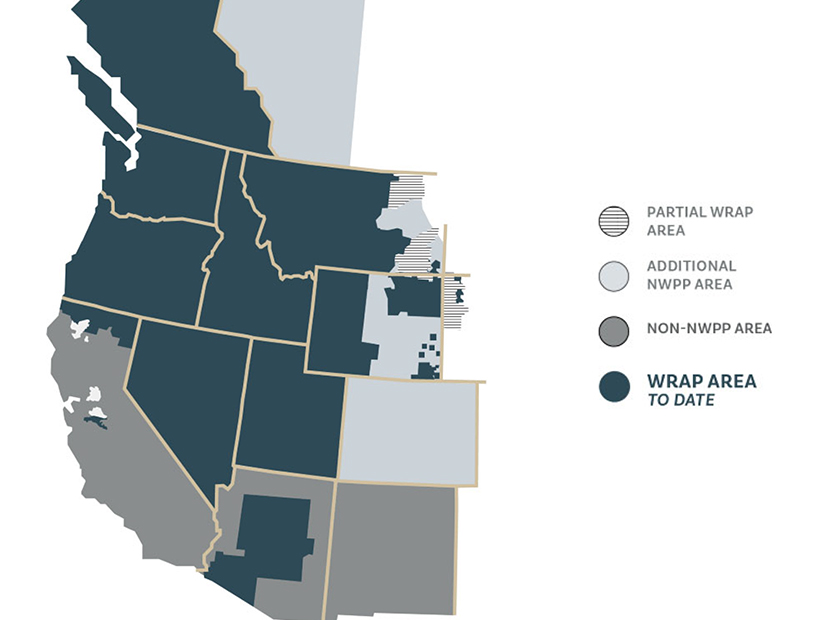The Northwest Power Pool began forming committees last week to nominate directors and shape program design for its resource adequacy effort designed to serve much of the Western Interconnection.
The new stakeholder committees will start to prepare the program’s governance for an initial nonbinding “beta test” of the Western Resource Adequacy Program (WRAP) starting next winter and should be in place before NWPP seeks FERC approval for binding phases of the program in late 2023, organizers said.
In standing up the WRAP, NWPP has determined that it must meet FERC requirements for the group’s governance and committee structures as well as for the program’s design, including the appointment of an independent board of directors to replace its existing board staffed by member representatives. (See RA Program will Require Restructuring of NWPP.)
“We see the need ahead of the nonbinding program [and] ahead of the FERC filing … of setting up committees,” Sarah Edmonds, director of transmission services at Portland General Electric, said Wednesday during an NWPP meeting. “We see the need to get those committees going ahead of official approval of the governance structure, [and] we expect … that what we’re doing will be very easily translatable into the future FERC jurisdictional governance program with little to no changes.”
The two new committees — the Program Review Committee and the Nominating Committee — will be composed of representatives from various sectors, including independent power producers, public interest organizations and advocates for retail customers.
The Program Review Committee “will be charged with receiving, considering and proposing design changes to the WRAP and will serve as the clearing house for most recommended design changes,” NWPP said in a statement.
The Nominating Committee will help establish an independent board by working with an executive search firm to identify candidates.
In Wednesday’s meeting, NWPP Director of Reliability Programs Rebecca Sexton-Kelly asked sector representatives if they wanted to organize among themselves or needed NWPP’s help finding committee members.
Spencer Gray, executive director of the Northwest & Intermountain Power Producers Coalition, volunteered NIPPC to lead committee selection on behalf of independent power producers and marketers.
Nicole Hughes, executive director of Renewable Northwest, offered to head the public interest sector’s selection process. And Josh Weber, an attorney representing the Alliance of Western Energy Consumers, said AWEC would lead industrial sector organizing.
NWPP is planning to help the retail advocacy sector and a sector representing certain types of load-serving entities to find potential committee members.
‘Unacceptable Loss of Load’
NWPP began examining the idea of a Western RA program in 2019, as shortfalls loomed because of the retirement of fossil fuel plants, especially coal-fired plants, and the spread of weather-dependent wind and solar resources.
“Soon, areas in the West may face a capacity deficit of thousands of megawatts,” NWPP CEO Frank Afranji said in an April 2020 meeting hosted by the Committee on Regional Electric Power Cooperation and the Western Interconnection Regional Advisory Body. “Deficits of that magnitude may result in both extraordinary price volatility and unacceptable loss of load.”
The WRAP is intended to increase visibility into existing RA conditions in the West, addressing concerns among industry stakeholders and state regulators that load-serving entities are unknowingly relying on the same capacity resources without realizing it, threatening system reliability during periods of scarcity.
The program is designed to provide participants a framework in which to access capacity resources when a participant is experiencing an extreme event.
In December, NWPP took its first steps in implementing WRAP by inviting participants to submit resource data for a nonbinding phase of the capacity market, which the organization says will serve as a “beta test” for a final program design. (See Implementation Underway for NWPP’s Western RA Market.)
NWPP noted that the move to implement the WRAP officially kicks off its working relationship with SPP, which has been retained to administer the program. (See SPP to Operate NWPP’s Resource Adequacy Program.)
Last week’s start to forming key committees was the next big step.
“The NWPP is looking forward to getting stakeholders engaged in governance and program design updates in this hands-on way,” COO Gregg Carrington said in a statement. “It’s an exciting evolution of the organization.”



